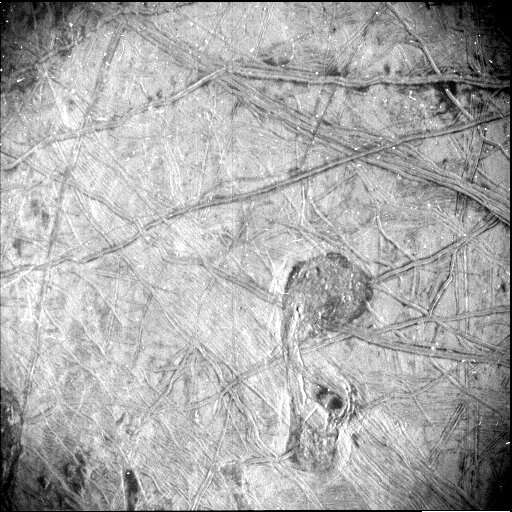
Copernical Team
Swedish space instrument will study the Moon on board a Turkish spacecraft
 A space instrument from the Swedish Institute of Space Physics (IRF) will be sent to the Moon within the next few years onboard the Turkish spacecraft AYAP-1. In orbit around the Moon, the Lunar Neutrals Telescope will study how the flow of charged particles from the Sun, the solar wind, interacts with the Moon's surface.
The agreement between IRF and the Turkish Space Technologies Researc
A space instrument from the Swedish Institute of Space Physics (IRF) will be sent to the Moon within the next few years onboard the Turkish spacecraft AYAP-1. In orbit around the Moon, the Lunar Neutrals Telescope will study how the flow of charged particles from the Sun, the solar wind, interacts with the Moon's surface.
The agreement between IRF and the Turkish Space Technologies Researc SpaceX's Crew 5 mission blasts off to ISS with Russian cosmonaut onboard
 NASA and SpaceX's Crew 5 mission lifted off from Cape Canaveral Space Force Station in Florida at noon EDT on Wednesday and is on its way to the International Space Station.
The crew, which includes NASA astronauts Nicole Mann and Josh Cassada, Japanese astronaut Koichi Wakata and Russian cosmonaut Anna Kikina, are scheduled to work aboard the space station for six months.
SpaceX
NASA and SpaceX's Crew 5 mission lifted off from Cape Canaveral Space Force Station in Florida at noon EDT on Wednesday and is on its way to the International Space Station.
The crew, which includes NASA astronauts Nicole Mann and Josh Cassada, Japanese astronaut Koichi Wakata and Russian cosmonaut Anna Kikina, are scheduled to work aboard the space station for six months.
SpaceX Overlapping galaxies VV 191 (Webb and Hubble composite image)
 Image:
Overlapping galaxies VV 191 (Webb and Hubble composite image)
Image:
Overlapping galaxies VV 191 (Webb and Hubble composite image) Eight steps to advance ESA diversity

Diversity and inclusiveness are at the heart of the ESA’s values and are high on the ESA Agenda 2025 as key elements to complete the ESA Transformation. Eight steps, aimed at advancing these values as concrete initiatives, will pave the way for continuous improvement.
Juno gets highest-resolution close-up of Jupiter's moon Europa

Observations from the spacecraft's pass of the moon provided the first close-up in over two decades of this ocean world, resulting in remarkable imagery and unique science.
The highest-resolution photo NASA's Juno mission has ever taken of a specific portion of Jupiter's moon Europa reveals a detailed view of a puzzling region of the moon's heavily fractured icy crust.
The image covers about 93 miles (150 kilometers) by 125 miles (200 kilometers) of Europa's surface, revealing a region crisscrossed with a network of fine grooves and double ridges (pairs of long parallel lines indicating elevated features in the ice). Near the upper right of the image, as well as just to the right and below center, are dark stains possibly linked to something from below erupting onto the surface.
SpaceX's Crew 5 mission blasts off to International Space Station
 NASA and SpaceX's Crew 5 mission lifted off from Cape Canaveral Space Force Station in Florida at noon EDT on Wednesday and is on its way to the International Space Station.
The crew, which includes NASA astronauts Nicole Mann and Josh Cassada, Japanese astronaut Koichi Wakata and Russian cosmonaut Anna Kikina, are scheduled to work aboard the space station for six months.
SpaceX
NASA and SpaceX's Crew 5 mission lifted off from Cape Canaveral Space Force Station in Florida at noon EDT on Wednesday and is on its way to the International Space Station.
The crew, which includes NASA astronauts Nicole Mann and Josh Cassada, Japanese astronaut Koichi Wakata and Russian cosmonaut Anna Kikina, are scheduled to work aboard the space station for six months.
SpaceX Atlas V rocket launches two communications satellites
 Two new communications satellites are deployed into space after launching aboard an Atlas V rocket from Cape Canaveral Space Force Station, Fla.
The United Launch Alliance launch went smoothly with liftoff at 5:36 p.m. Tuesday, followed by the jettisoning of the Atlas V's three solid rocket boosters two minutes later and the separation of its first stage about 4.5 minutes after liftoff.
Two new communications satellites are deployed into space after launching aboard an Atlas V rocket from Cape Canaveral Space Force Station, Fla.
The United Launch Alliance launch went smoothly with liftoff at 5:36 p.m. Tuesday, followed by the jettisoning of the Atlas V's three solid rocket boosters two minutes later and the separation of its first stage about 4.5 minutes after liftoff. Amid Ukraine war, US flies Russian cosmonaut to ISS
 A SpaceX rocket carrying a Russian crew member blasted off from Florida Wednesday on a voyage that carries significant symbolism as war rages in Ukraine.
Anna Kikina, the only female cosmonaut in service, is part of the Crew-5 mission, which also includes one Japanese and two American astronauts.
"Let's do this," said Nicole Mann, commander of the Crew Dragon capsule and the first Native
A SpaceX rocket carrying a Russian crew member blasted off from Florida Wednesday on a voyage that carries significant symbolism as war rages in Ukraine.
Anna Kikina, the only female cosmonaut in service, is part of the Crew-5 mission, which also includes one Japanese and two American astronauts.
"Let's do this," said Nicole Mann, commander of the Crew Dragon capsule and the first Native Russian launches to space from US, first time in 20 years

Lensed galaxies in VV 191 (Webb and Hubble composite image)
 Image:
Lensed galaxies in VV 191 (Webb and Hubble composite image)
Image:
Lensed galaxies in VV 191 (Webb and Hubble composite image) 
